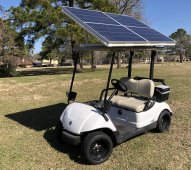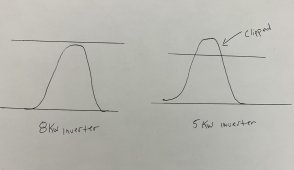I have been trying to discover if solar panels 'max-out' or not.
By 'max-out' I mean that they reach a maximum output before the sun is perpendicular to the panels.
As the newer inverters can provide a detailed history of power harvested, I wondered if those who have them could share their findings.
I'd like to know what your maximum rate of harvesting power is, for what capacity array, and for how long on a 'good' day that has been achieved.
Does your rate of input flatten-out for much of the day or does it rise, then fall (never maxing-out)?
I am trying to determine over what angle of incidence a set of panels can produce full power and, if there is a maximum output, how the output compares with the claimed performance of the panels.
So a 4Kw set of panels may be able to produce 3.6Kw for 2hrs on a day when conditions are most favourable (high Summer), showing that the rays do not need to be perpendicular to the panels to get maximum performance and the max measured performance is 90% of the specification.
By 'max-out' I mean that they reach a maximum output before the sun is perpendicular to the panels.
As the newer inverters can provide a detailed history of power harvested, I wondered if those who have them could share their findings.
I'd like to know what your maximum rate of harvesting power is, for what capacity array, and for how long on a 'good' day that has been achieved.
Does your rate of input flatten-out for much of the day or does it rise, then fall (never maxing-out)?
I am trying to determine over what angle of incidence a set of panels can produce full power and, if there is a maximum output, how the output compares with the claimed performance of the panels.
So a 4Kw set of panels may be able to produce 3.6Kw for 2hrs on a day when conditions are most favourable (high Summer), showing that the rays do not need to be perpendicular to the panels to get maximum performance and the max measured performance is 90% of the specification.





